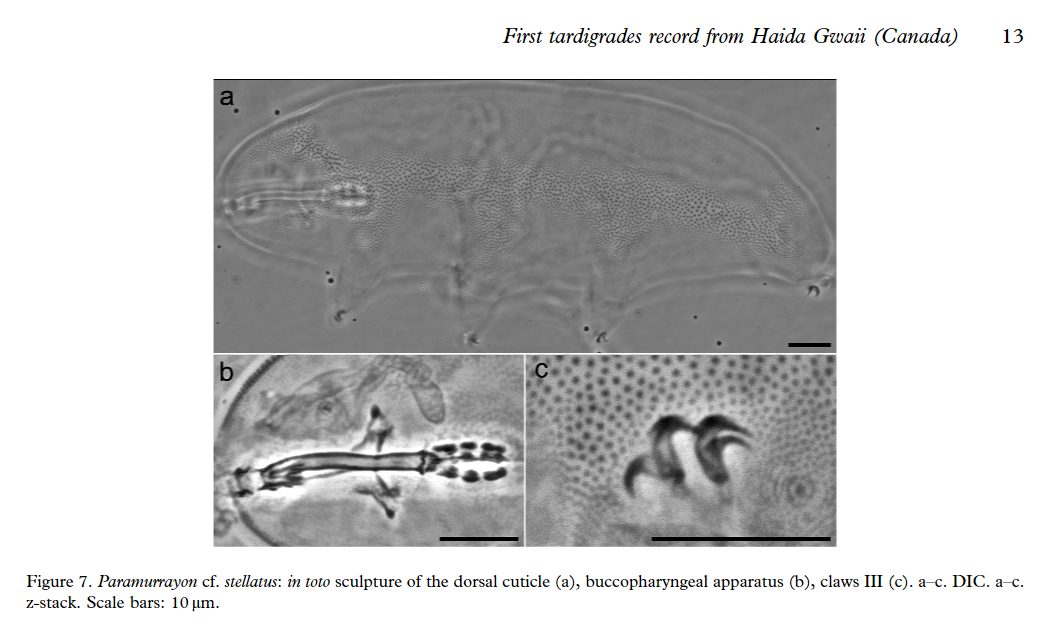Seen for the First Time, Ever
Discovering the secrets of microcosm
New Star-Digrade is Born!
Science of today is heavily focused on several key areas, leading to situation in which classical branches of scientific research are completely marginalized.
While it is logical to provide sources for cancer research, we should be asking the question if the future generations will develop curiosity for natural world.
A recently published study describes the discovery of new species of Tardigrades in British Columbia.
The entire publication is available in pdf format, for free, while we will provide the abstract, accompanied with the Figure 7 from the publication.

Abstract: Moss samples were collected from trees and rocks in Haida Gwaii, British Columbia, Canada, and examined for the presence of tardigrades. Specimens from 24 taxa were found in 17 out of the 22 examined samples. New species records for British Columbia are provided and undescribed Grevenius and Crenubiotus species were found; a division in four mor-phogroups of Grevenius, based on number and presence of placoids, is provided to aid in the future identification. In addition, three specimens of a new species belonging to a potential new undescribed Diploechiniscus species were identified. The finding of Macrobiotus occidentalis occidentalis also provides the occasion to transfer the latter one to the genus Diaforobiotus, for which a new dichotomous key for the identification of its species is given and to redefine the family Richtersiusidae. The DNA sequences of selected taxa are also provided. The high number of tardigrade species collected from a relatively low number of samples highlight how still unexplored is tardigrade diversity, particularly in still-largely insular island systems like Haida Gwaii
Why do you think we mentioned this discovery?
It will not change anything, fundamentally. However, this is the first time in the recorded human history that we became aware of this exact specie. That feeling is something that is difficult to describe and you either feel that excitement or you don’t.
I know how I felt when Professor Guidetti called me one afternoon during my short scientific visit to show me something. On the screen, there was a Tardigrade from Antarctica, discovered 5 minutes ago. Roberto was the first human who have ever seen it, while I was the second one. It’s truly unforgettable moment, at least for me.
Tardigrade, as Citizen Science Opportunity
Research like this is very affordable. All the is needed are basic garden tools, a set of fine sieves, a decent microscope and – patience.
The hobby itself is inexpensive and I can bet that new species could be found on very unsuspecting places, maybe even your own backyard.
Think about it, you could become immortal by giving the name to a new species and the cost will be less than the cost of barely running used car.
If you want to become Maecenas and support Tardigrade research in exchange for immortality, contact us and we could connect you with the leading experts.
Reference: Massa, E., Vecchi, M., Calhim, S. and Choong, H., 2024. First records of limnoterrestrial tardigrades (Tardigrada) from Haida Gwaii, British Columbia, Canada. The European Zoological Journal, 91(1), pp.1-20.




